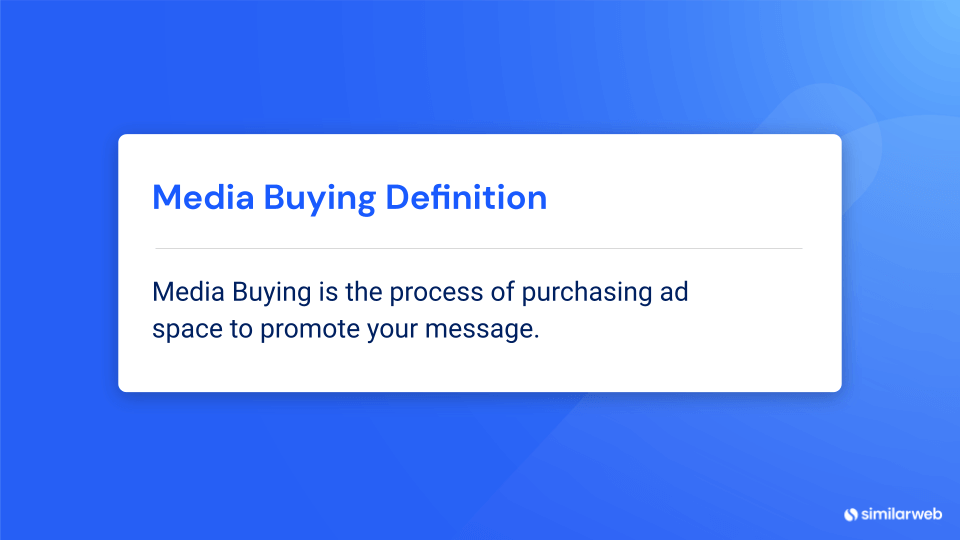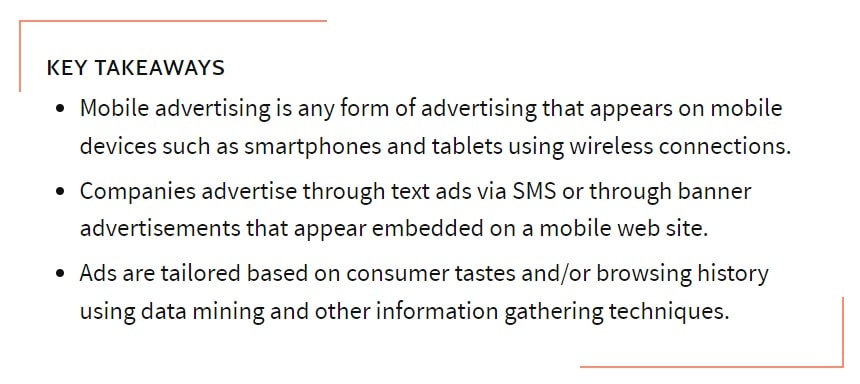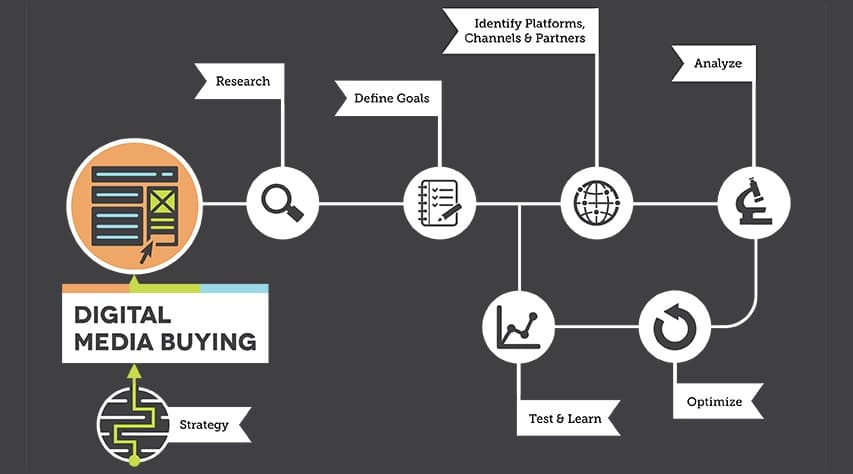Looking to break your advertising into the digital world? Don’t know where to begin? Start with both digital media buying and planning, two crucial components to any successful digital marketing endeavor. We’re here to help you get started!
However, let’s break it down a bit for those new to the concept of digital media buying. We’ll cover some basic 101, the process, and what a digital media plan looks like.
Table of Contents
Digital Media Planning & Buying: An Overview
No matter what type of project you’re looking to undertake, it’s important to have a clear plan to streamline the process and set you up for success.
Digital media planning is no different. It’s a guide that helps companies identify and develop
strategies for their marketing campaigns while keeping their budget and target audience in mind.
Often, companies hire an outside media strategist or agency to help them develop their plan and consult a media buyer. There are different digital media buying solutions available for
businesses of all sizes. Some offer more flexibility than others, but ultimately you want to choose one that best fits your needs.
Though no two campaigns are the same, BetterTeam highlights how digital media planning often includes “negotiating and acquiring advertising space across digital media platforms” while also “monitoring, optimizing, and reporting on campaign performance; managing budgets, and liaising with clients.”
As highlighted before, no two plans are exactly alike, but it’s essential to remember these themes when strategizing. Digital media planning is a way to identify your ideal client, develop your marketing campaign, and ensure its success in exposing your brand.
What is Digital Media Buying?

Digital media buying is the process of acquiring online advertising space on websites and social networks to promote your brand, product, or service. It’s a highly effective way to reach your potential customers in their own environment – where they are most likely to see your message.
Typically, the process any business owner goes through when deciding on digital media buying & planning are:
- Identifying the target audience for your campaign
- Choosing which platform you want to advertise on
- Selecting keywords that will help people find your content
- Setting up ad campaigns with specific budgets
- Monitoring performance and adjusting as needed
Display advertising is the most common form of digital media buying. This includes banner
ads, pop-up ads, and other types of ads that appear on websites and mobile apps. Display ads are usually placed by an advertiser directly onto a website or app. They can also be displayed via third-party sites such as Facebook, Twitter, Google AdWords, etc.
Video ads are becoming increasingly popular because they are engaging and attention-grabbing.
They can be used to drive traffic back to your site, increase engagement, and boost sales. You
can use FlexClip to create short videos that explain your products and services or longer videos that showcase how your company works.
Social network ads allow advertisers to place ads within the context of social networking pages like Facebook, LinkedIn, Instagram, Pinterest, and Twitter. These ads are typically text-based
and include links to your website.
Advertisers can purchase ads on mobile apps through a variety of channels including Apple iTunes, Android Market, Amazon Appstore, and Windows Marketplace.

Choosing a Media Buyer
There are things you must have figured out before shopping for options. How much time do you have to dedicate to managing your ads? Do you need to be able to manage multiple accounts at once? Are you looking to buy banner ads or video ads?
A digital media buyer performs several tasks to help advertisers reach their target audience. Here are just a few examples:
Create campaigns
Campaigns are groups of ads that share similar targeting criteria. They are based on your target audience and an even more specific group based on your focus point.
Manage ad accounts
A digital media buyer will manage your ad accounts across all platforms for you.
Analyze data
Data analytics helps advertisers measure the effectiveness of their campaigns.
Optimize performance
Digital media buyers work with advertisers to optimize their campaigns so they perform better than ever. They analyze data and adjust bids
accordingly.
When selecting a digital media buyer, understand what kind of experience you want from your vendor. Do you prefer a simple dashboard interface? Would you rather have access to detailed reports? How many vendors should you compare before making a decision? And finally, how much control over your account do you want to retain?
If you’re unsure about what you want, then start small. Choose a single platform first and learn about its features. Then add another platform later if you decide it’s right for you.
Once your options are narrowed down, look into each vendor’s customer support. Are there any special features you might need? Is their pricing competitive? What does the average transaction cost per month look like?
Three Key Steps to Successful Digital Media Planning
Now that you have a basic understanding of digital media buying, it’s time to start planning. The digital media plan should come before you shop for media buying solutions, and here are three basic tips to help you get started with your guide.
Timeline
A timeline is a crucial aspect of any sort of media buying and planning. It’s vital to identify any critical dates as you begin your planning. Once you have established these necessary
checkpoints, you can start planning around them, ensuring all elements are ready to go by your launch date. With all this in mind, you can begin working with your team to establish personal deadlines and goal points to keep yourselves on track with your project. Identifying and setting these dates is an easy way to ensure your planning goes smoothly and your ad is ready to go at the right time.
Identify Your Target Audience
An essential aspect of your digital media planning should be your target audience. Marketing Evolution defines the target audience as “the specific group of consumers most likely to want your product or service.” Your target audience can be decided by gender, geographic location, age, interests, income, etc. This group is specific to your company or product. By identifying your target audience, your company can create advertisements that speak to them. Additionally, identifying your target audience is crucial when deciding where to advertise your business, leading us to the next tip!
Advertising Outlets
No matter what type of advertising your company is looking to engage in, it’s important to
strategically select what platforms will run your ads. Digital media is no different. Once you have identified your target audience, you can begin to look at analytics regarding the websites they visit the most. It can be anything from certain news outlets to specific online retailers. Ad buying should never be random; if you want your ad to reach a particular group, you should purchase ad space on channels they visit.
One great thing about digital marketing is that you can track data and analytics in real time, meaning that you can monitor engagement and make appropriate adjustments to your ad placement if needed. Strategically selecting advertising outlets is a simple way to help you run a successful marketing campaign.

About the author